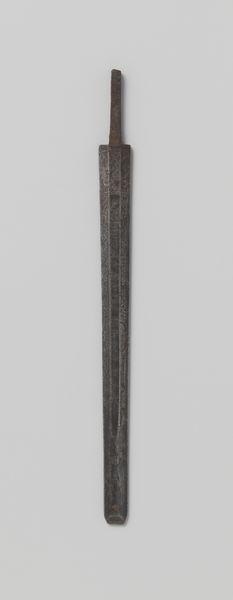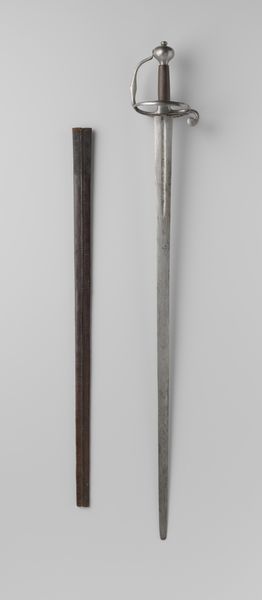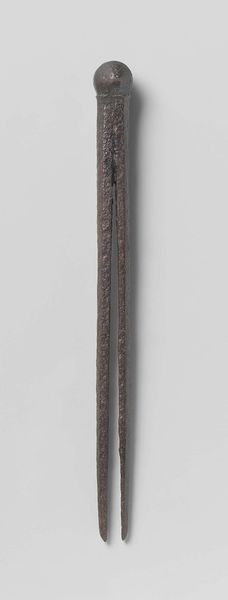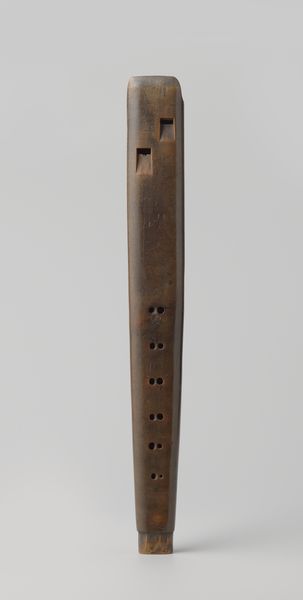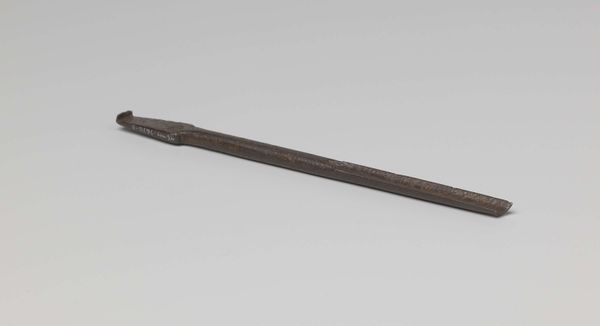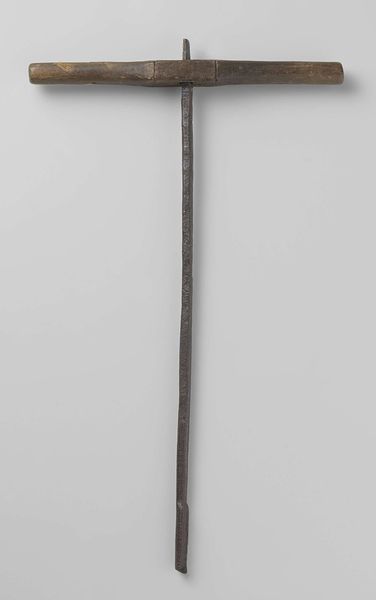
Handvat van zwarte kunststof met geribbeld oppervlak en afgesneden stekels, voor een paraplu of parasol c. 1910 - 1920
0:00
0:00
gustavschnitzler
Rijksmuseum
sculpture, wood
#
clear graphic shape
#
3d model
#
3d printed part
#
plastic material rendering
#
virtual 3d design
#
3d shape
#
sculpture
#
metallic object render
#
product mock up
#
3d modeling
#
wood
#
decorative-art
#
product render
Dimensions: length 20.5 cm, diameter 1.8 cm
Copyright: Rijks Museum: Open Domain
Curator: The Rijksmuseum holds this handle made of black synthetic material with a ribbed surface and cut spines, intended for an umbrella or parasol, dating from around 1910-1920. It presents such a stark profile. Editor: My immediate thought is the tension here—it mimics nature, a stylized branch, but is rendered in an obviously industrial material, plastic. It feels both organic and deeply artificial. Curator: Exactly, this points to a broader history. During this period, new materials like early plastics were rapidly entering everyday life. Objects like this reflect a changing world, where mass production started impacting even personal accessories like umbrellas. How was this novel material being perceived? Editor: Considering production, it must have been exciting. Cheaper to make, perhaps more durable than wood. The surface is interesting, a repetitive ribbing along the “branch,” indicative of early molding techniques. You can feel the hand of the machine but aspiring for natural form. Curator: And the 'cut spines'-- those are more stylized than naturalistic. It shows how the manufacturer, Gustav Schnitzler, interpreted the form of nature in a decorative, marketable way. We can explore the evolving social role of umbrellas as status symbols during this period too, how these forms shifted. Editor: I wonder, how did laborers react to these new synthetics threatening their wood-crafting jobs? An umbrella handle, traditionally carved perhaps, suddenly churned out in plastic. Did it democratize luxury, or did it devalue craftmanship? Curator: Good questions that make you consider the broader historical shift—these new materials opened doors for some, while closing others. It is also about our understanding of material value as well: is 'natural' always better? It challenges perceptions. Editor: It’s amazing how this simple object holds within it anxieties around industry, changing material economies and of course the weather. Even something functional reveals deeper complexities when you really consider the stuff it's made from. Curator: I find it fascinating how this mass-produced item speaks volumes about the democratization of design and production at the turn of the century. Editor: It truly shows how looking closely at mundane objects can reveal profound shifts in labor and material culture.
Comments
No comments
Be the first to comment and join the conversation on the ultimate creative platform.



